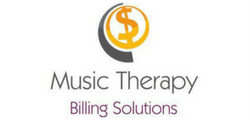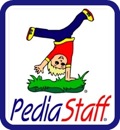This post is inspired by two completely different media pieces that I have read/watched in the past 24 hours. The first is a blog post published on Parents.com imploring professionals and non-professionals to stop using the terms “low functioning” and “high functioning” to describe children on the spectrum. The second, a segment that aired on John Oliver’s show Last Week Tonight with John Oliver covering the poor state of our mental health system (disclaimer: do not watch this segment if you prefer to avoid profanity or sophomoric humor).
Pacton (the Parents.com blog author) argues that using labels such as “low functioning” and “high functioning” does not describe a person, and it potentially undermines a child’s ability to develop, change, and believe in him- or herself.
In the TV segment, Oliver highlights how common it is for politicians to deflect on issues of gun control and steer the conversation—in a misguided, non-fact based way—to the “broken” mental health system.
Two completely different pieces, yet they both explore similar themes of the dangers surrounding labels and perceptions.
To me, these pieces highlights yet again the importance of being aware of the labels used to describe our clients, and of the perceptions surrounding their diagnoses and challenges. In part, this relates to an awareness of how we personally think of, talk about, and write about our clients. But it also includes being aware of how others talk and write about our clients.
This can admittedly be a bit of a moving target. For example, when I was in school the proper language to use was person-first language. You mention the name of the person first, then attached the diagnostic descriptor. A child with autism. An 60-year-old female with cancer. John, who has schizophrenia. However, now there seems to be a movement in some camps (a self-directed, grassroots movement), to embrace a disorder as an inherent part of who the person is, e.g. an Autistic person.
Even with these developments, the issue is still there—labels and perceptions are not always productive nor respectful. So how can we as education and healthcare professionals help?
Though I do not have all the answers, I do have some suggested guidelines to consider:
- Approach your work from a place of respect and compassion. Respect implies you acknowledge the abilities your clients have and possess, and compassion that you have a genuine concern for the well-being of others. Even if you get it wrong at times, respectful and compassionate care lays the foundation for honest intentions, and opens the door to learning from clients and adapting as appropriate.
- Work with an evidence-based practice mindset. By “evidence-based practice” I’m not referring to the original definition that only relied on research evidence; rather, I’m referring to an evolved version that combines the best-available research evidence with clinician knowledge and client needs and preferences. It’s the latter branch that is pertinent to these musings. If we are truly working with the client in his or her own treatment, then it’s not the music therapist going in as the “white coat know-it-all expert.” It’s the clients whose needs and values are respected enough to be incorporated in their own process.
- Use labels only as intended. Labels actually do serve a purpose, but that purpose involves diagnostic and medical coding needs. Labels provide a code that serves as a standard language among certain facets of our healthcare system. But labels do not accurately represent or characterize an entire person.
- Evolve with change. Be aware of developments that emerge surrounding language and semantics. Respect them enough to change.
- Be a role model. Lead by example in your willingness to grow and change, your compassionate care, and your respect of clients and who they are.
If you have thoughts or additional suggestions to share, please leave a comment in the boxes below.



 orcid.org/0000-0001-8665-1493
orcid.org/0000-0001-8665-1493






{ 0 comments… add one now }
You must log in to post a comment.